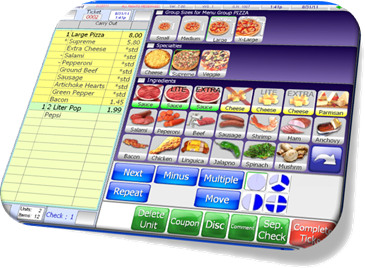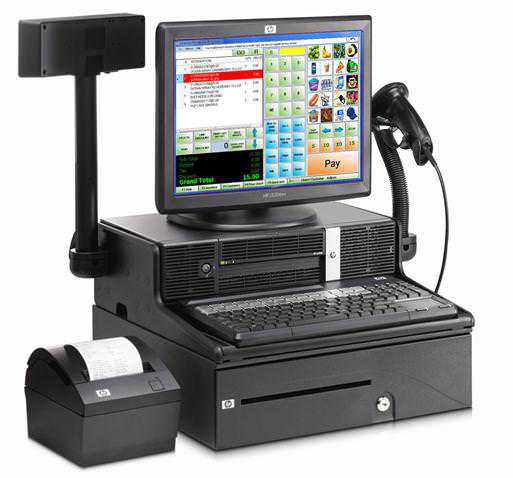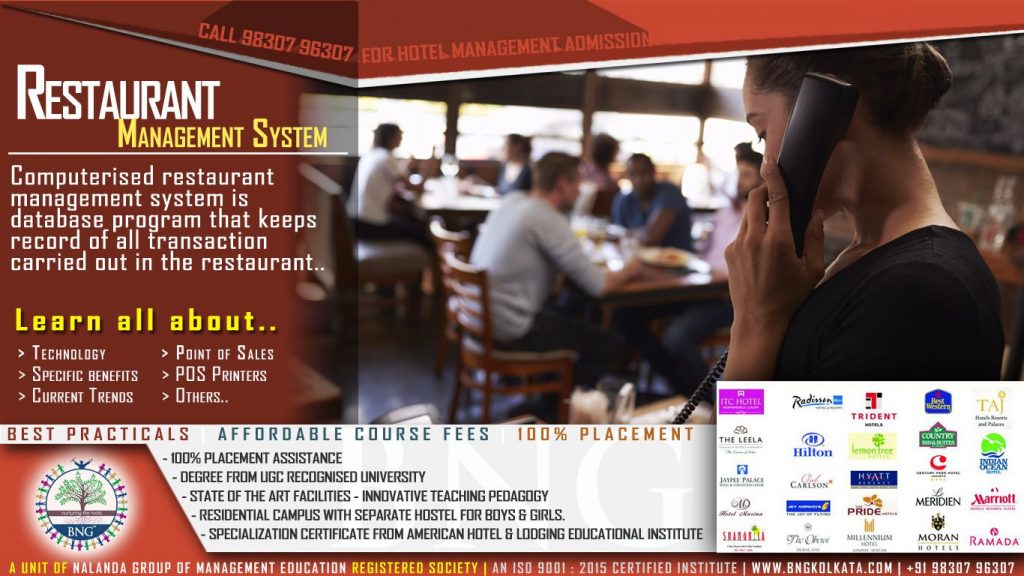Computerized Restaurant Management Systems
Computerised restaurant management system is database program that keeps record of all transaction carried out in the restaurant on daily bases. The Restaurant Management System helps the restaurant management to keep adequate record of all transactions carried out and does that will still be carried out by the restaurant and maintain the database of the restaurant.
A POS System, a core foundational application and Restaurant Management System, can enhance decision-making, operational control, guest service, and revenues. However, not all POS systems offer the same features and potential for profit improvement. The purpose of this section is to discuss  those factors that are critical to POS system or Restaurant Management System selection for table service restaurants.
those factors that are critical to POS system or Restaurant Management System selection for table service restaurants.
A POS system is a network of cashier and server terminals that typically handles food and beverage orders, transmission of orders to the kitchen and bar, guest-check settlement, timekeeping, and interactive charge posting to guest folios. POS information can also be imported to accounting and food cost/inventory software packages.
A variety of reports can be generated including open check (list of outstanding checks), cashier, voids/ comps, sales analysis, menu mix, server sales summary, tip, labor cost, etc from Restaurant Management System. Sophisticated POS systems can generate hundreds of management reports.
A POS system can streamline employee tasks to save time and improve productivity. For example, a POS system provides the opportunity to eliminate cashier positions by assigning this responsibility to servers who carry their own personal banks. Combining certain technologies such as wireless handheld order entry systems with kitchen display systems signifiantly reduces service delays and labor requirements and increases table turnover.
The aforementioned technology combination was used to slash at least 20 minutes off the total guest experience and eliminate the need for a window-person dealing with orders entering the kitchen at a busy T.G.I. Friday’s restaurant (www.micros.com).
Benefits of using Restaurant Management System technology in a restaurant.
-
Elimination of arithmetic errors.
-
Improved guest check control.
-
Increased average guest check.
-
Faster reaction to trends.
-
Reduced labor costs and greater operational effiiency.
-
Reduced card-related expenses.
-
Reduced late charges.
Specific benefits of Restaurant Management System include:
1. Delivery of food is quicker resulting in higher average checks and greater table turnover.
2. Servers have more time for servicing guests and suggestive selling resulting in higher tips and satisfied guests. For example, handhelds at the Oak Forest Bowl in Chicago, Illinois eliminated the need for servers to walk back and forth across a 20,000 square foot beer garden to take and input orders into the POS system. Servers at Washington, D.C.’s Royal Mile Pub use handhelds to quickly list all of the 83 single-malt scotches the restaurant serves.
3. Training time is significantly reduced. With easy access to the menu, including daily specials, server menu knowledge is enhanced and menu memorization reduced.
4. Handhelds can be equipped with portable belt printers and credit card swipes for printing customer receipts and performing tableside settlement. This provides quicker service, for curbside and takeout service especially, and also safeguards guests from credit card fraud.
5. Handhelds inform the servers when items are out of stock or orders are ready, although this task can also be accomplished through waiter paging systems. Silent (no beeper noise) paging systems are available. Servers receive an unmistakable vibration when an order is ready.
6. More tables can be assigned to servers without compromising the service.
7. Customer, ingredient, and nutritional information can be accessed easily.
8. Errors and omissions due to transferring orders to the POS system are significantly reduced.
9. Lines at POS terminals are eliminated.
 10. The Restaurant Management System can prompt a server to read each order back to verify accuracy before hitting send.
10. The Restaurant Management System can prompt a server to read each order back to verify accuracy before hitting send.
11. Hardware-related costs can be reduced. Five fied POS stations, for example, can be replaced with two fied stations and eight to ten handhelds, reducing energy consumption. Handhelds may have the capability of texting or emailing receipts, reducing the cost of reordering thermal receipt paper and printers.
POS Printers
When selecting printers, noise, speed, reliability, special features, and costs must be considered for better Restaurant Management System. POS printers produce credit card slips and receipts for customers and order slips for the kitchen and bar staff.
Dot matrix and thermal are two commonly used slip and receipt printers for Restaurant Management System. A dot matrix printer is an impact printer that forms text by pressing the ends of pins against a ribbon. A thermal printer is a non impact printer that forms an image by moving heated styluses over specially treated paper. Both of these printers use continuous roll paper.





